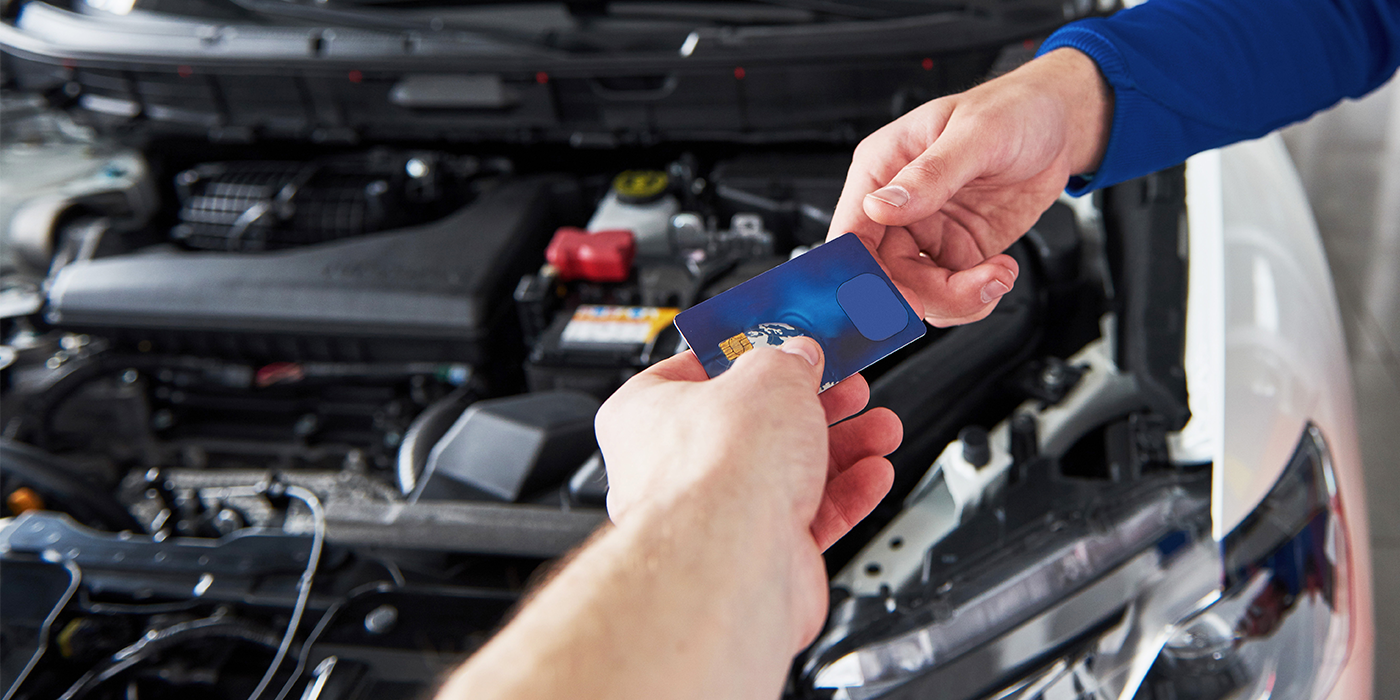Taken for a Ride
Being Vigilant is the Only Way Dealers Can Guard Against Fraud
Plastic is rapidly replacing paper when it comes to purchases these days. From credit and debit cards to check cards, some find it almost archaic to simply carry cash. And even though check writing is on the wane, it still seems to be coming out ahead of handing over a five for a $4.87 purchase and getting back two dimes and three pennies.
Consumers have been leaning further away from hard money for a while now. Many reasons for this persist – some explainable, some not – but it’s something to which businesses have become accustom.
Of course, and unfortunately, businesses have become accustom to fraud, as well. Check and credit card fraud have risen steadily in recent years.
Not only is payment fraud something every business owner has to worry about, it’s also something they’re looking to combat.
Being vigilant is the best course of action. Dealers need know ways of heading off credit and check fraud before they end up having to eat hundreds, possibly thousands, of dollars in bogus payments.
Credit Card Fraud
The increase in point-of-sale processing terminals has helped fight credit card fraud by giving business owners immediate authorization for transactions. Even so, your first line of defense is still your people – educate them. A processing terminal doesn’t observe behavior before the transaction is complete. It also doesn’t check any security features that might come with the card.
An important starting point for a defending against credit card fraud is to know the rules – that means making sure any employee who handles payment transactions is familiar with the Visa, MasterCard, Discover, et al rules and regulations provided by your processor. That alone will go a long way toward fraud prevention.
Make sure you and your staff understand the basics of credit card fraud, including warning signs and common ploys. Do a little research and network with other merchants and dealers to stay abreast of important developments.
Use Common Sense
Much of stopping fraud is simple common sense, such as never allowing another business to use your credit card terminal for their transactions. In addition to being a violation of most card issuer regulations, this greatly increases the odds of fraud.
Here are four steps Visa recommends taking in each face-to-face transaction to help reduce credit card fraud:
- Hold on to the card for the entire transaction; you will need it to complete some simple security measures. Do not automatically return the card to the customer after you swipe it.
- Review all of the card’s security features. Match the account numbers on front and back, carefully look at the card’s embossing, check the hologram, and flip the card over to inspect the signature panel. If the card is not signed, ask the customer to sign the card and/or request to see a valid government identification for comparison.
- Get approval via the POS terminal.
- Compare signatures from the back of the card to the signed sales draft.
- All employees should be trained to trust their instincts in potentially fraudulent situations. Be wary of suspicious behavior, such as someone who signs the receipt awkwardly or tries to rush a large purchase through at the end of the day.
- Criminals know that businesses are most susceptible to fraud when they are distracted, and rushing to close up for the day while you handle last minute customers can be a tempting scenario.
- Of course, if credit card fraud is suspected, reporting it is critical – not only for your dealership but for the many other businesses which the not-so-trustworthy customer could rip off.
- But what should you do if you suspect fraud? Visa recommends:
- If possible, immediately and confidentially inform your manager of the situation without letting go of the card.
- Call the authorization center and, in a normal tone of voice, ask for a Code 10 authorization. By doing so, you put the center on alert without letting the customer know you are suspicious.
- If you are able to speak freely, tell the operator what you are suspicious about. Otherwise, the operator will ask you a series of "’yes"’ or "’no"’ questions about the transaction, so be sure to have the card and sales draft at hand. You should also have your merchant number handy.
Be Safe, Not Foolish
When placing a Code 10 call, always remember your safety comes first. If you feel you may be in danger, just decline the transaction and return the card to the customer. If you’re unable to make a Code 10 call at the time of the transaction, do so as soon after the transaction as possible. The issuer can investigate and block the account from further use if need be.
According to Visa, about 50% of Code 10 calls result in approvals. The other half are determined by the authorization center to be fraudulent. This procedure is key to fraud prevention at the point-of-sale.
Visa and MasterCard also have several tools to help understand the dangers of credit card fraud and implementation of your own protection program. The following links take you to additional resources:
- General tips and hints for avoiding fraud from Visa: www.visabrc.com/-doc.phtml?8,0,400
- Detailed fraud awareness presentation for use in staff training and developing working procedures: www.visa-brc.com/doc.phtml?5,0,45
- Prevention basics from MasterCard: www.mastercard.com/business/merchant/fraud.html
The Bouncing Check
Much like credit card fraud, bounced check are a business hazard – and an occurrence that will eventually happen to all businesses. According to the Federal Reserve, more than $700 million is lost by banks, credit unions, etc. on more than 600,000 bad checks written each year.
And those numbers continue to increase.
Returned checks equal huge losses for businesses. The only way to completely guard against the bad check is to simply not accept checks. But the reality of not accepting checks for tire dealers – who have sales of hundreds of dollars per customer at times – isn’t feasible. But there are steps dealers can take steps to minimize risks.
One is to ask for photo identification and compare the signature and photo on the ID with the person signing the check. More than 50% of forged checks are cashed off an expired driver’s license. Recording expiration date, license number and state on the front of the check can help alert the recipient of potential problems. If the printed address is a post office box, obtain the customer’s street address. Record cashier numbers and initials on the check – initials are important if prosecution becomes necessary.
Record all information legibly. Don’t accept pre-written personal checks. At the very least, the signature should be written in your presence. This practice will also benefit you if court action becomes necessary. And don’t accept starter checks or two-party checks.
Here are a few clues to spot forged checks:
- The check doesn’t have a perforated edge
- The bank numbers across the bottom appear glossy or irregular
- The last three digits of the Federal Reserve Number beneath the check number do not agree with the first three digits of the bank number at the bottom of the check
- There is a difference in, or misalignment of, type styles
- The check bears a name other than the check writer’s
- The printing appears faint or photocopied.
While these tips can help reduce the number of bad checks your business accepts, they are not fool-proof. So have a plan in place for handling bad checks – and perhaps even call in a professional collection service.













